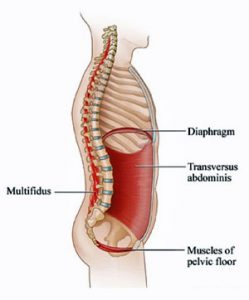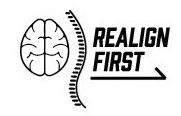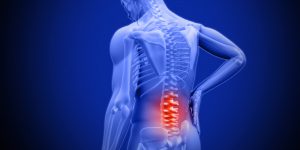Let’s jump right in.
Allow me to introduce the “behind the scene” superstars; the Diaphragm, the Transverse Abdominis, the Multifidus, and the Pelvic Floor muscles.
These are the 4 muscles (muscle groups) that create the
“internal abdominal pressure” in order to stabilize the core region.

This picture shows you “where” these 4 muscles (muscle groups) are located.
Top→ Diaphragm
Bottom→
Pelvic Floor muscles
Front (side)→
Transverse Abdominis
Back→ Multifidus
When these muscles are able to contract (flex) together at the same time, well balanced “internal abdominal pressure” is created!
However,,,
derived from VARIOUS reasons, one or more of these muscles can be or become weaker than the other, which then can create an
“imbalance” in the “internal abdominal pressure”.
What happens when there’s imbalance?
It could mean increased stress or “leaks” of pressure in those weak areas.
ANYTHING and EVERYTHING, from low performance in sports to low back pain to incontinence to bad posture to shallow breathing,,, the list goes on and on.
I don’t know many people who have never experienced any of the above (especially after like 30 years of age).
Do you?
The fact that these symptoms (there are a ton more) are extremely popular, mean that we are not good at automatically knowing how to “keep” our inner unit strong (enough).
I’m not saying you should blindly start strengthening our inner unit, or we all need to aim for perfectly tuned & strong inner unit.
What I want you to know is, by working to create a better balanced “internal abdominal pressure”, we can “minimize” these symptoms.
Moreover, I want you to know that “minimizing” these symptoms, are in fact, a choice.
When I say it’s a choice, I mean there’s no excuse not to start strengthening these muscles.
NO gym required,
NO equipment required,
NO money required,
NO chunk of time required,
NO age limit,
just some knowledge, some will, and devotion.
Of course, if you are an athlete, or engage in high demand physical activity, you would need a strong inner unit relative to those demands.

 Imagine holding a huge cotton candy. What if the candy was as heavy as ice cream the same size?
Imagine holding a huge cotton candy. What if the candy was as heavy as ice cream the same size?